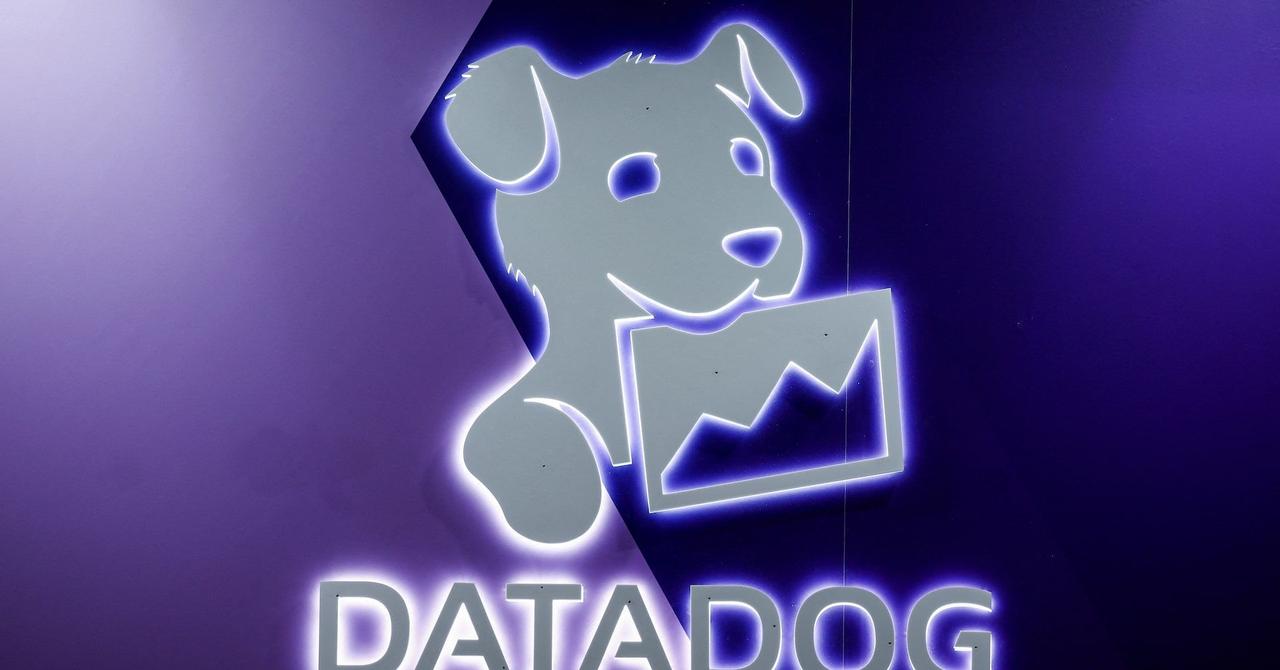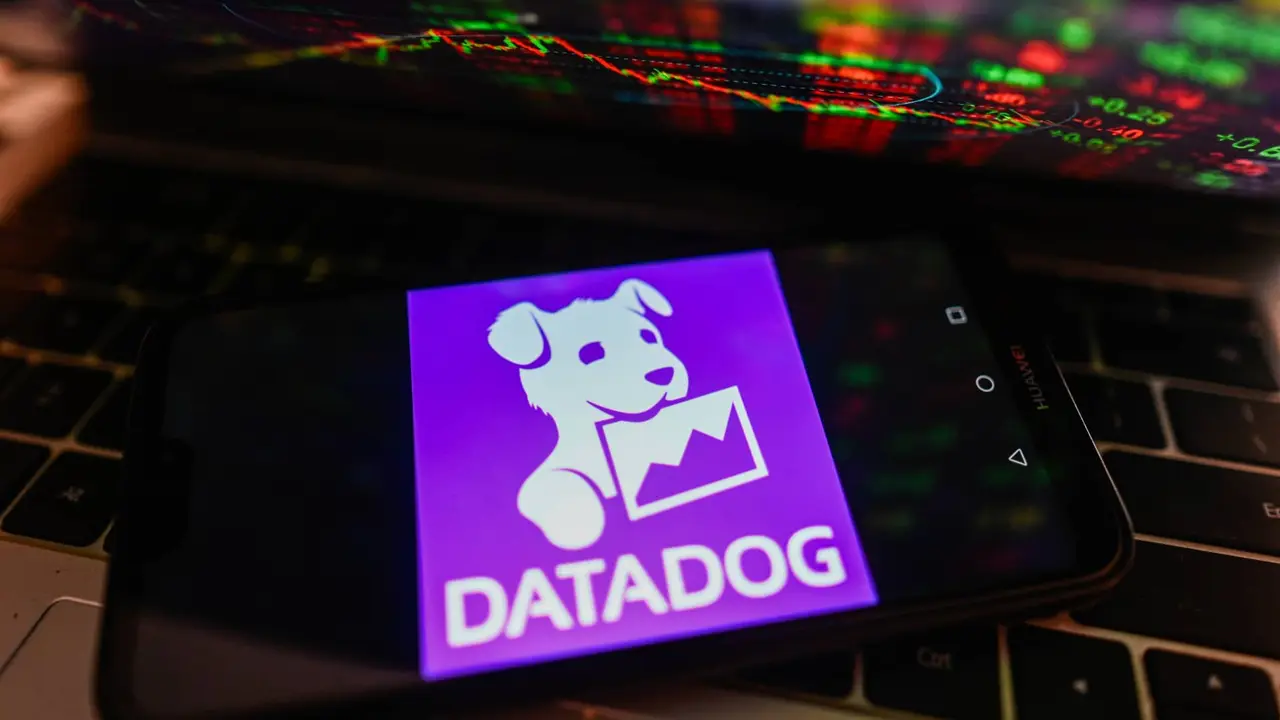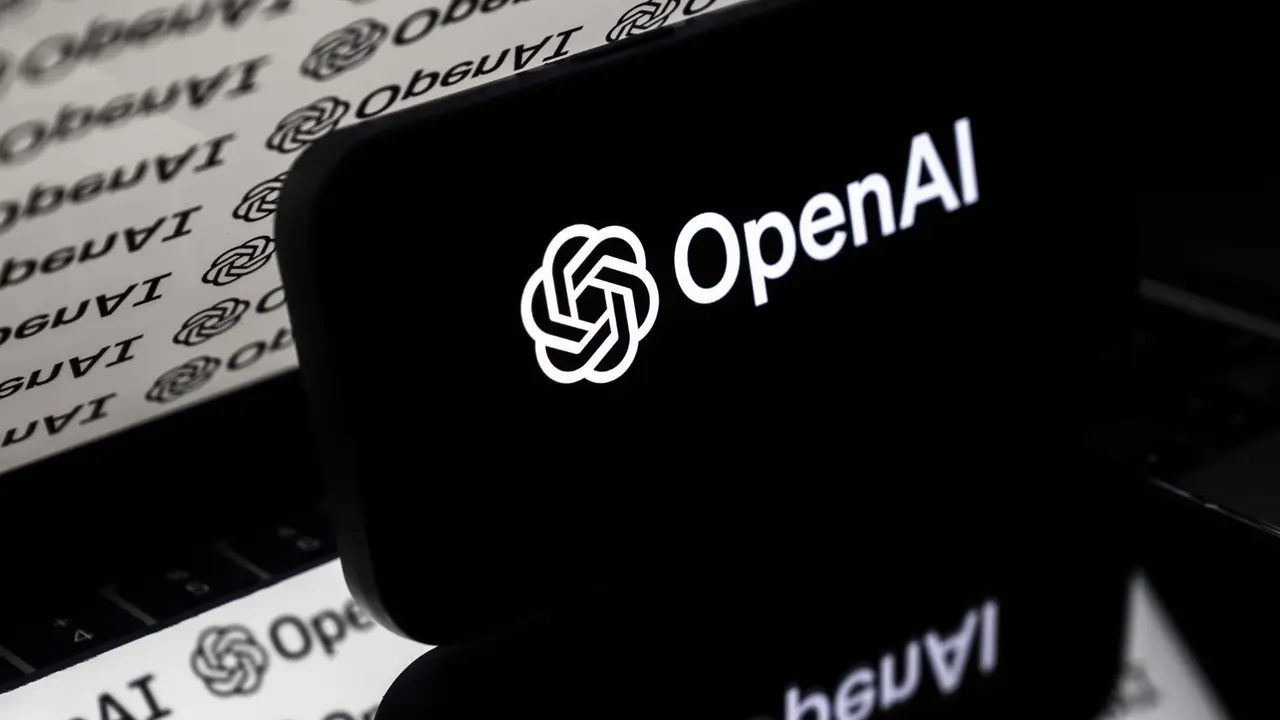Datadog Joins S&P 500: AI-Driven Cloud Monitoring Firm Sees Surge in Stock Value and Growth Potential
3 Sources
3 Sources
[1]
This Artificial Intelligence (AI) Stock Is Surging After Joining the S&P 500. Can It Continue to Skyrocket? | The Motley Fool
Shares of Datadog (DDOG -4.23%) shot up nearly 15% on July 3 after it was revealed that the provider of cloud-based observability, monitoring, and security solutions will join the S&P 500 index on July 9. Datadog will be replacing Juniper Networks in the index after the latter was acquired by Hewlett Packard Enterprise. It is easy to see why Datadog's inclusion in the index has sent its stock soaring. To enter the index, a company needs to demonstrate solid profitability in the past four quarters, along with enough liquidity. Datadog's inclusion in the S&P 500 over other contenders is a positive for the stock, as it demonstrates the market's confidence in the company. It's also worth noting that the stock has shot up a remarkable 76% in the past three months following its latest surge. Does this mean it is too late to buy Datadog stock? Let's find out. Datadog's cloud-based observability platform allows customers to monitor their cloud activity across servers, databases, and applications to detect issues, while its security features scan for vulnerabilities so that they can be fixed quickly. The demand for Datadog's cloud observability solutions has been rising at an impressive pace, thanks to the secular growth of the cloud market. Now, the company is also providing tools for monitoring large language models (LLMs) and other artificial intelligence (AI) applications. The company is targeting lucrative end markets that are currently worth around $80 billion. This indicates that it has a lot of room for long-term growth. It has generated $2.8 billion in revenue in the trailing 12 months. However, investors will now have to pay a rich premium to buy into Datadog's potential growth. That's because it is now trading at a whopping 330 times trailing earnings. Though the forward earnings multiple of 82 is significantly lower than the trailing multiple, it is still on the expensive side when compared to the S&P 500 index's average earnings multiple of 24. The price-to-sales ratio of 20 is over 6x the index's average sales multiple. The only way Datadog stock can sustain its impressive stock market momentum is by delivering stronger-than-expected growth and outpacing Wall Street's growth expectations. But can the company do that? We have already seen that Datadog is scratching the surface of a massive end-market opportunity in the cloud observability market. The advent of AI is likely to help it corner a bigger portion of the addressable market on offer by opening up a cross-selling opportunity. Datadog had 30,500 customers at the end of the previous quarter, and 4,000 of them have been using one or more of its AI services. Importantly, Datadog management says that this number doubled on a year-over-year basis in the previous quarter, and the good part is that this trend is likely to continue. After all, customers are flocking toward Datadog to improve the performance of their LLMs with its observability solutions. The company points out that "the number of companies using LLM Observability has more than doubled in the past 6 months." That's the reason why Datadog is now pushing the envelope on the product development front by bringing new AI-focused solutions to customers. Its Bits AI platform helps customers investigate incidents, fix code, and review security alerts autonomously. All this should eventually allow Datadog to accelerate its growth rate in the future as the adoption of AI applications in the cloud increases. For instance, the size of the LLM market is expected to jump by more than 6x by 2030, which should lead to an increase in the demand for Datadog's offerings. Not surprisingly, analysts are forecasting an acceleration in Datadog's growth going forward. This improvement in the company's top-line growth is expected to filter down to the bottom line as well, as shown in the chart below. However, don't be surprised to see Datadog's earnings grow at a faster pace than Wall Street's expectations as a large chunk of its existing customer base is yet to adopt its AI solutions. This huge cross-selling opportunity should enable the company to win a bigger share of existing customers' wallets and improve its margin profile. Datadog seems to be in a position to justify its expensive valuation by stepping on the gas. That's why it could entice growth-oriented investors, even after the impressive gains that it has clocked in recent months.
[2]
The Newest AI Stock in the S&P 500 Is Up 300% Since 2020 and It's Still a Buy Today, According to a Wall Street Analyst
The S&P 500 (^GSPC -0.07%) is one of three major U.S. stock market indexes, though it is widely seen as the best gauge for U.S. equities because of its breadth. The index includes over 80% of domestic stocks by market capitalization. The S&P 500 is usually updated quarterly on the third Friday of March, June, September, and December. But software company Datadog (DDOG -4.23%) was added to the index before the market opened on July 9. It replaced Juniper Networks, which was recently acquired by Hewlett Packard Enterprise. Datadog stock has returned 300% since January 2020, but some Wall Street analysts see more gains on the horizon. Yun Kim at Loop Capital tops that list. His target price of $200 per share implies 31% upside from its current share price of $152. Read on to learn more. Stocks tend to increase following their inclusion in the S&P 500 In total, 160 companies were added to the S&P 500 over the last decade, meaning about a third of the index was replaced during that period. Those stocks increased by an average of 12.3% in the year following their inclusion. Put differently, history says Datadog stocks will advance about 12% in the next 12 months. Why do stocks often increase after joining the S&P 500? The answer lies in the numerous investment products linked to the index. Funds that track the index must buy Datadog upon its inclusion to ensure their composition matches the benchmark, and that buying activity can lead to significant price appreciation in the short term. That said, tailwinds related to inclusion in the S&P 500 are short-lived. How Datadog stock actually performs during the next year depends primarily on financial fundamentals like revenue and earnings. Also, sentiment plays a role in that some stocks command higher valuations than others because investors are particularly excited about those businesses. Datadog uses artificial intelligence to monitor critical IT infrastructure Datadog sells observability software. Its platform includes about two dozen products that help businesses monitor the performance of critical IT infrastructure and applications. Its platform also includes an artificial intelligence (AI) engine called Watchdog, which uses machine learning to detect anomalies and surface proactive alerts. Datadog has been ranked as a leader in several software markets. Consultancy Gartner recently recognized its technology leadership in observability software for the fourth straight year, and it recently named Datadog a leader in digital experience monitoring software for the first time. And earlier this year, Forrester Research recognized the company as a leader in AI for IT operations. Datadog reported first-quarter financial results that beat estimates on the top and bottom lines. Customers increased 9% to 30,500 and the average existing customer spent about 10% more. In turn, revenue increased 25% to $762 million, but non-GAAP net income rose just 4% to $0.46 per diluted share as the company continued to expand its headcount and invest in product development. Management raised its full-year guidance, but adjusted earnings are still forecast to decline 7% in 2025 as the company continues to grow its R&D and sales teams. Nevertheless, the company remains optimistic about future growth opportunities. "We continue to believe that adoption of AI will benefit Datadog in the long term," said CFO David Obstler on the earnings call. Datadog shares have added 13% this month on news of the company's inclusion in the S&P 500, and the stock currently trades at 82 times adjusted earnings. That is an especially rich valuation for a company whose earnings are forecast to grow at 17% annually through 2027. Datadog beat the consensus estimate by an average of 13% in the last four quarters, but the stock would still be expensive even if that trend continues. Indeed, Most Wall Street analysts think Datadog is slightly overvalued. The median 12-month target price of $140 per share implies 8% downside from its current share price of $152. Datadog should benefit as more companies depend on AI, so investors should keep the stock on their watch lists. But I would wait for a better entry point before buying shares.
[3]
Datadog, the cloud outsider, joins the ranks of the giants
As the world continues to shift deeper into the virtualization of its activities, companies are moving rapidly toward digitalization. Cloud computing, hybrid infrastructures, connected applications, distributed architectures: these are the technological building blocks that now form the invisible backbone of modern businesses. But a challenge is emerging alongside this: that of monitoring, analyzing, and controlling this rapidly growing IT complexity. This is precisely where Nasdaq-listed Datadog comes in, like a conductor of digital chaos. Founded in 2010 by Olivier Pomel and Alexis Lê-Quôc, this New York-based company offers a modular SaaS observability platform capable of monitoring the performance of applications, IT infrastructures, and critical data in real time. In July 2025, the stock officially joined the S&P 500 index, marking its entry into the very exclusive club of the most influential American companies. This recognition is not merely symbolic, but a strategic turning point for savvy investors. The business model is based on selling subscriptions to its cloud-native platform. This now includes over 24 products ranging from infrastructure monitoring (APM, logs, traces) to cloud security modules, cost management, AI, and LLM observability. Users can choose the tools that best suit their needs, which leads to a growing average basket size and high retention rates. This model has four key qualities: In 2023, Datadog generated $2.13bn in revenue, up 27%. EBITDA jumped 48% to $535m, while net profitability returned to positive territory ($49m). In 2024, sales are expected to reach $2.68bn. For 2025, non-GAAP net income is expected to range between $1.67 and $1.71 per share. Even more impressive, in Q1 2025, the company: The stock market performance followed suit: after the announcement of its entry into the S&P 500 on July 2, 2025, the stock soared +15% in one trading session. Technically, we could expect a pullback to fill the gap at $135 to initiate or strengthen a position. Datadog is emerging as a clear beneficiary of the AI revolution. According to Bank of America estimates, 8.5% of its ARR already comes from AI-native companies such as OpenAI and Cursor, with triple-digit annual growth. Two strategic levers have been identified: Observability is therefore essential for validating AI-generated code, tracking intelligent agents, and ensuring the quality of business results. With its observability products for LLM and integration modules (Eppo, Metaplane), Datadog is ideally positioned to become a central link in the DevSecOps of tomorrow. Datadog is still led by its co-founders, Olivier Pomel (CEO) and Alexis Lê-Quôc (President). Their youth (48 and 50 years old) contrasts with their seniority and strategic expertise. Despite high stock-based compensation, almost all of their compensation is indexed to long-term stock performance, aligning their interests with those of shareholders. The duo holds more than $3bn in Datadog shares, representing nearly 40% of the voting power. This control may worry some investors, but their impeccable track record over the past 15 years, rigorous capital allocation, and methodical execution of strategic plans are reassuring. The stock is trading at 15x its estimated EV/revenue for 2025, 12.5x for 2026 and 10x for 2027. Its emerging profitability (estimated net margin of 1% for 2025) makes it difficult to value using the P/E ratio, but if we look a little higher at operating income, the stock is trading at 42x its EBIT in two years based on current valuation. Its ability to generate cash through its subscription model allows it to command higher multiples. Based on its potential cash profit in 2028, if management sticks to its roadmap, the stock is trading at less than 30x its FCF. The valuation is demanding but not unsustainable. It even remains consistent for a category leader with: Datadog is more than just a software publisher. It is an emerging standard. Its inclusion in the S&P 500, its multiple growth drivers (multi-product, AI, security, cloud), its exemplary financial health, and its rigorous execution make it one of the most promising technology players for the next decade.
Share
Share
Copy Link
Datadog, a leading provider of cloud-based observability and security solutions, joins the S&P 500 index. The company's stock surges as it capitalizes on AI trends and expands its market presence in cloud monitoring.
Datadog's Inclusion in S&P 500 and Stock Surge
Datadog (NASDAQ: DDOG), a provider of cloud-based observability, monitoring, and security solutions, has been added to the S&P 500 index, effective July 9, 2025. The announcement led to a significant 15% surge in the company's stock price on July 3
1
. This inclusion replaces Juniper Networks, which was recently acquired by Hewlett Packard Enterprise2
.Company Overview and Market Position

Source: Market Screener
Founded in 2010 by Olivier Pomel and Alexis Lê-Quôc, Datadog offers a modular SaaS observability platform that monitors the performance of applications, IT infrastructures, and critical data in real-time
3
. The company's cloud-native platform includes over 24 products, ranging from infrastructure monitoring to cloud security modules and AI observability tools3
.Datadog has been recognized as a leader in several software markets, including observability software and digital experience monitoring
2
. The company's AI engine, Watchdog, uses machine learning to detect anomalies and provide proactive alerts2
.Financial Performance and Growth
In 2023, Datadog generated $2.13 billion in revenue, a 27% increase from the previous year. The company's EBITDA jumped 48% to $535 million, with net profitability returning to positive territory at $49 million
3
. For 2025, non-GAAP net income is expected to range between $1.67 and $1.71 per share3
.The company's Q1 2025 results were particularly impressive:
- Revenue increased 25% to $762 million
- Customer base grew 9% to 30,500
- Average customer spend increased by 10%
2
3
AI and Cloud Market Opportunities

Source: Motley Fool
Datadog is well-positioned to benefit from the growing AI and cloud markets. The company is targeting lucrative end markets currently worth around $80 billion, indicating significant room for long-term growth
1
. Datadog's AI-focused solutions, such as the Bits AI platform, help customers investigate incidents, fix code, and review security alerts autonomously1
.According to Bank of America estimates, 8.5% of Datadog's Annual Recurring Revenue (ARR) already comes from AI-native companies like OpenAI and Cursor, with triple-digit annual growth
3
. The company's observability products for Large Language Models (LLMs) and integration modules position it as a central player in the DevSecOps of tomorrow3
.Related Stories
Stock Performance and Valuation

Source: Motley Fool
Datadog's stock has returned 300% since January 2020
2
. Following the S&P 500 inclusion announcement, the stock added 13% in July 20252
. However, the current valuation is considered rich, with the stock trading at 82 times adjusted earnings2
.While some analysts, like Yun Kim at Loop Capital, see potential upside with a target price of $200 per share, others believe the stock is slightly overvalued
2
. The median 12-month target price of $140 per share implies an 8% downside from its current price of $1522
.Leadership and Future Outlook
Datadog remains led by its co-founders, Olivier Pomel (CEO) and Alexis Lê-Quôc (President), who hold significant voting power and have demonstrated a strong track record of strategic execution
3
. The company's emerging profitability, subscription-based model, and potential for cash generation support its premium valuation3
.As Datadog continues to capitalize on AI trends and expand its market presence in cloud monitoring, it is positioning itself as a promising technology player for the next decade, despite its current demanding valuation
3
.References
Summarized by
Navi
[1]
[2]
[3]
Related Stories
Datadog Reports Strong Q2 Results Driven by AI Adoption, But Faces Potential Headwinds
08 Aug 2025•Business and Economy

Datadog Stock Soars on AI-Driven Growth Potential and Analyst Upgrades
12 Jun 2025•Business and Economy

Datadog Stock Upgraded by Mizuho, Poised for Upside Amid Vendor Consolidation Trend
16 Jul 2024

Recent Highlights
1
AI Chatbots Sway Voters More Effectively Than Traditional Political Ads, New Studies Reveal
Science and Research

2
Trump signs executive order to override state AI laws despite bipartisan pushback
Policy and Regulation

3
OpenAI warns upcoming AI models will likely pose high cybersecurity risk with zero-day exploits
Technology





